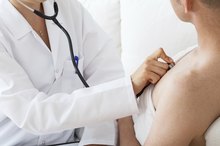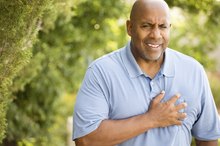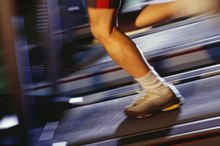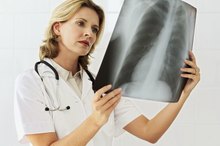Angina Pain After Eating
Angina is a type of chest pain that feels like a pressure or squeezing on your chest. Angina occurs when not enough blood flow and oxygen are getting to a part of your heart. Angina can occur regularly or unexpectedly. Most people will experience angina pains with activity or stress. However, there are many people who experience angina on a consistent basis after consuming food, particularly a larger meal.
If you are experiencing serious medical symptoms, seek emergency treatment immediately.
What is Angina?
Angina is a pain felt in your chest when your heart is not getting enough oxygen. This can be due to hardening or blockages of the arteries. It commonly occurs when performing an activity or experiencing emotional stress. The pain has been described as a pressure, heaviness, or squeezing feeling on the chest. It generally goes away when you stop the activity or when the stress is gone. If the pain does not decrease you should seek medical attention immediately.
- Angina is a pain felt in your chest when your heart is not getting enough oxygen.
Angina and Eating
What Are the Causes of Angina in Early Teens?
Learn More
Angina and eating have been studied since 1934. It has been shown that while eating, heart rate and the amount of blood the heart has to provide to the rest of the body increases. When the heart has some degree of artery disease, this excess demand can decrease blood flow. The higher the energy content of the food, the harder the heart has to work. For example, the body has to work harder when eating proteins than when eating carbohydrates. The increase in cardiac demand causes angina pains.
- Angina and eating have been studied since 1934.
- When the heart has some degree of artery disease, this excess demand can decrease blood flow.
Angina and Foods
Since angina is a sign of heart disease, the foods you choose have a large impact 1. Eating foods that are high in fat and cholesterol will cause more frequent pain. Consume foods that are low in salt and high in nutrients such as fruits, vegetables, high fiber foods and whole grains. These foods will have a lower cardiac demand and cause less pain.
- Since angina is a sign of heart disease, the foods you choose have a large impact 1.
- Eating foods that are high in fat and cholesterol will cause more frequent pain.
Controlling Angina
What Is a Cardiac Workload?
Learn More
There are two main types of angina, stable and unstable. Knowing which type you have is important for treatment. Stable angina occurs with stress, eating and activity and is predictable. Unstable angina occurs any time, even at rest, and is mostly random. Both types can be controlled by eating healthy, smaller meals, staying relaxed, deep breathing and exercise. If lifestyle changes do not work, your physician may prescribe a medication to help control or even reduce the pain.
- There are two main types of angina, stable and unstable.
- Stable angina occurs with stress, eating and activity and is predictable.
Related Articles
References
- FamilyDoctor.org: Angina and Heart Disease
- American Heart Association. Angina (Chest Pain). Updated July 31, 2015.
- American Heart Association. Stable Angina. Updated July 31, 2015.
- Fihn SD, Gardin JM, Abrams J, et al. 2012 ACCF/AHA/ACP/AATS/PCNA/SCAI/STS guideline for the diagnosis and management of patients with stable ischemic heart disease: executive summary: a report of the American College of Cardiology Foundation/American Heart Association task force on practice guidelines, and the American College of Physicians, American Association for Thoracic Surgery, Preventive Cardiovascular Nurses Association, Society for Cardiovascular Angiography and Interventions, and Society of Thoracic Surgeons. Circulation. 2012;126(25):3097-137. doi:10.1161/CIR.0b013e3182776f83
Writer Bio
Shannon Neumann specializes in clinical exercise for cardiac disease, diabetes, pulmonary disease, nutrition and stress management. She serves as an exercise physiologist in cardiopulmonary rehabilitation. Neumann holds a Master of Science in exercise science from Southern Connecticut State University, as well as national certifications from the American College of Sports Medicine, American Heart Association and the Aerobics and Fitness Association of America.









